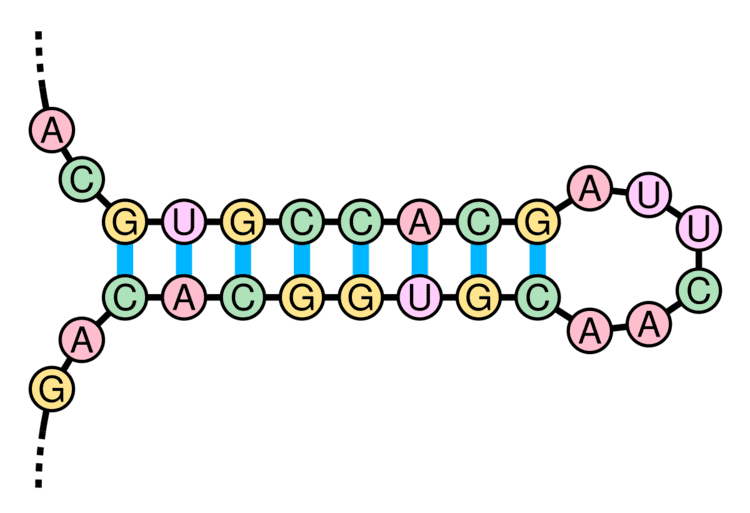 | ||
A kissing stem-loop, or kissing interaction, is formed in RNA when two bases between two hairpin loops pair. These intra- and intermolecular kissing interactions are important in forming the tertiary or quaternary structure of many RNAs.
RNA kissing interactions, also called loop-loop pseudoknots, occur when the unpaired nucleotides in one hairpin loop, base pair with the unpaired nucleotides in another hairpin loop. When the hairpin loops are located on separate RNA molecules, their intermolecular interaction is called a kissing complex. These interactions generally form between stem-loops. However, stable complexes have been observed containing only two intermolecular Watson–Crick base pairs.
Biological significance
Ribonucleic acid (RNA) molecules perform their function in living cells by adopting specific and highly complex 3-dimensional structures. It is believed that recombination may be intitated by the kissing loops. Recombination is critical to successful evolution, especially in the adaptation and survival of viruses.
